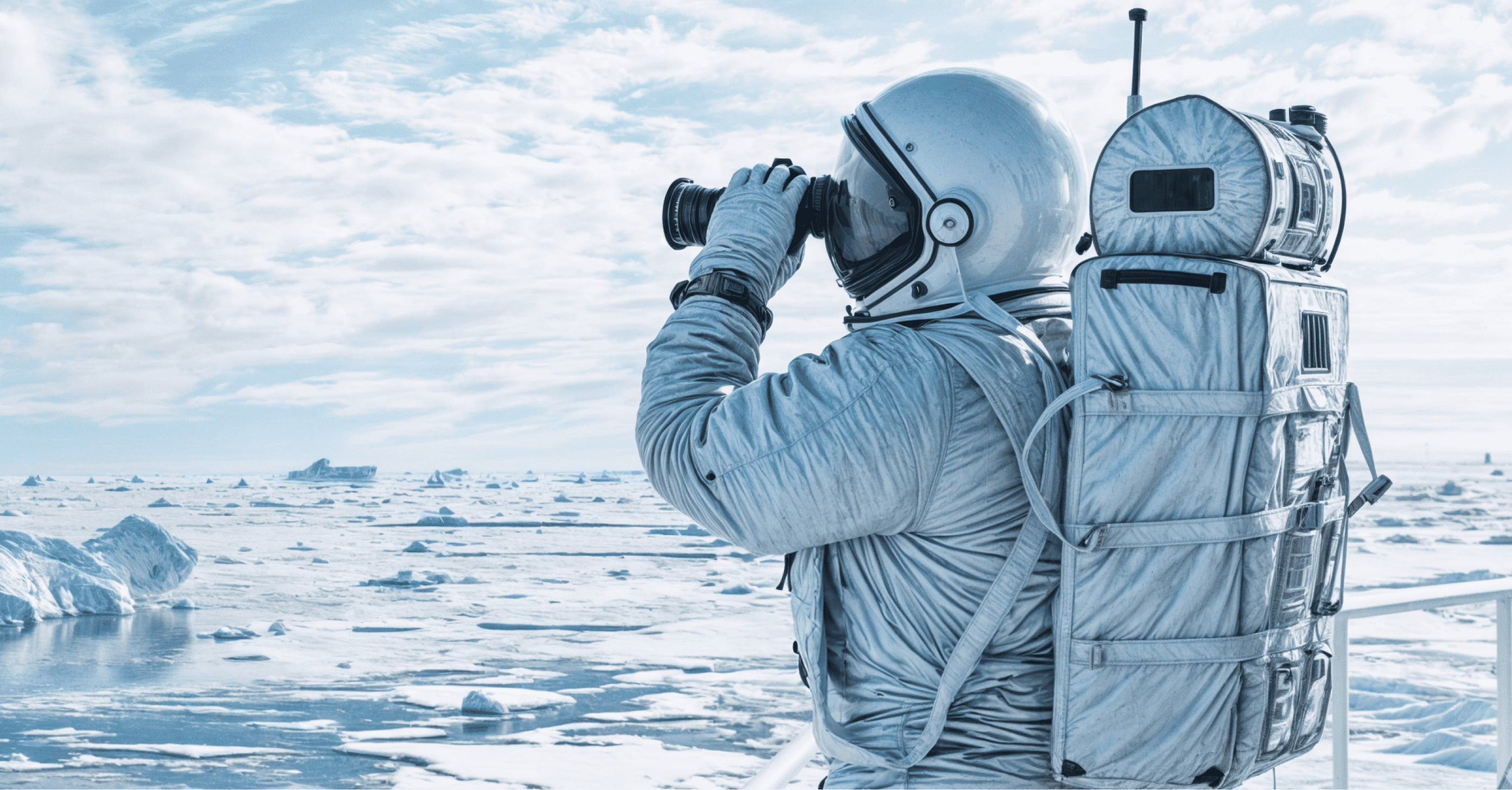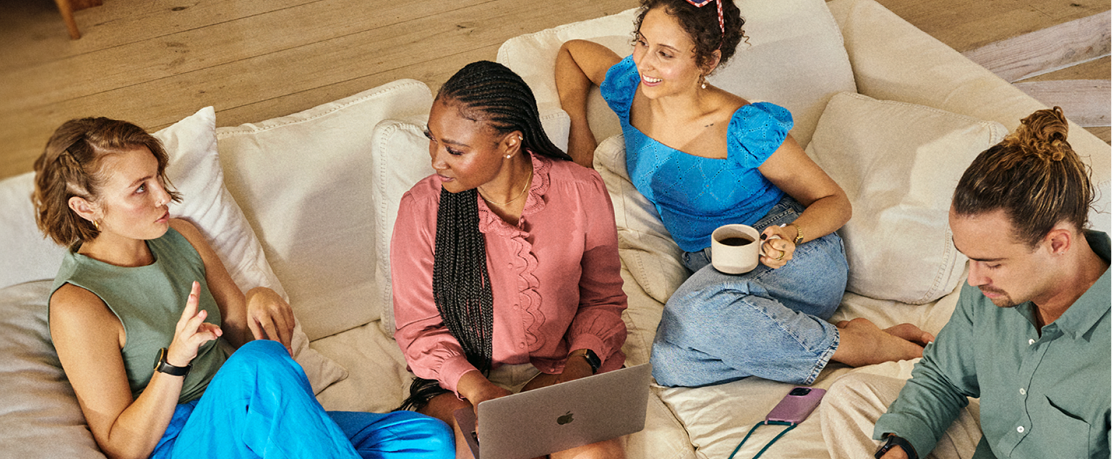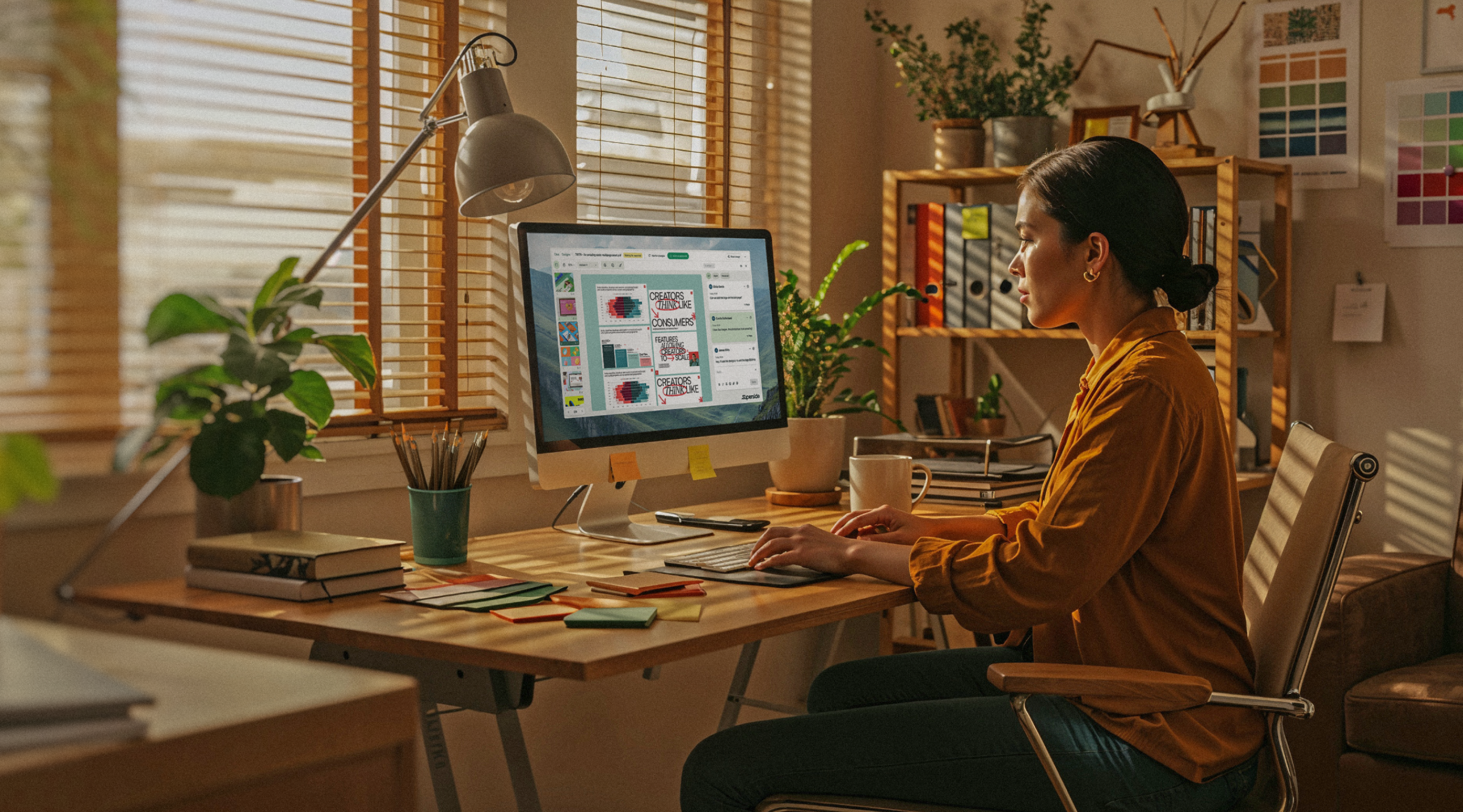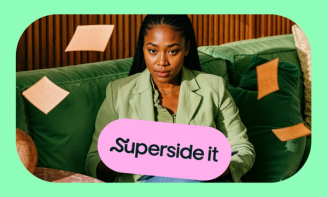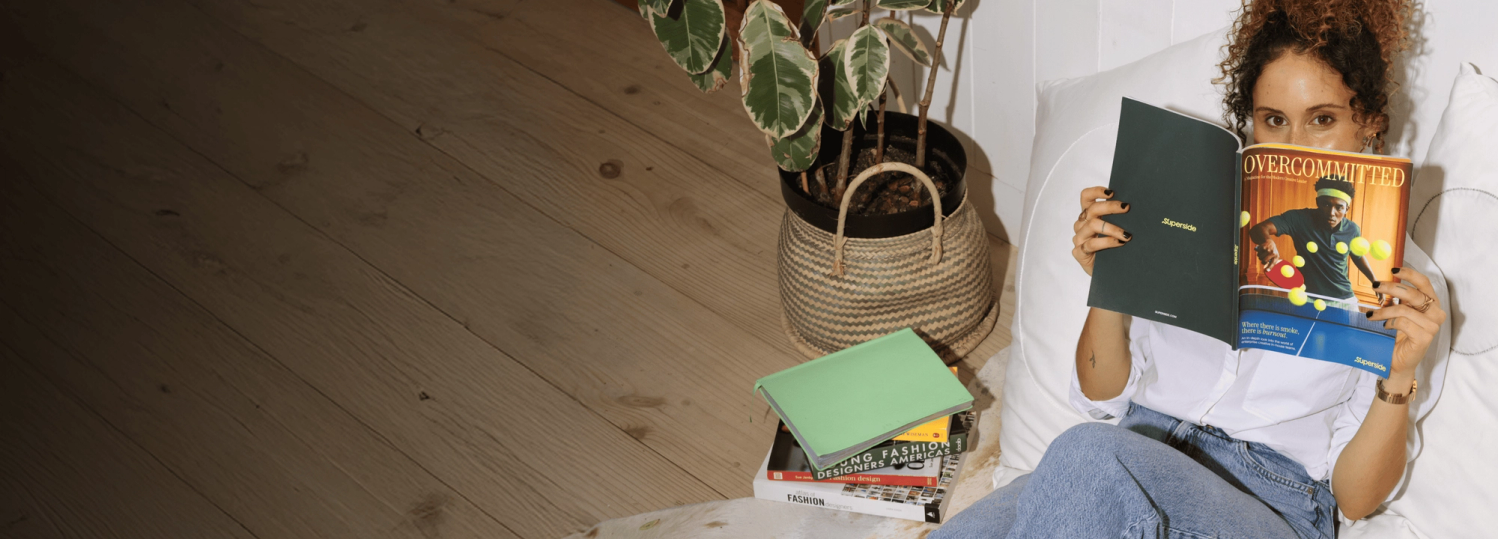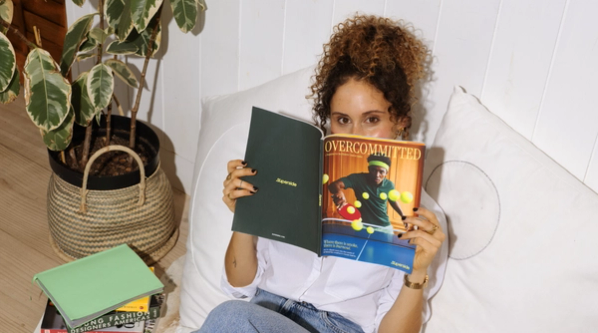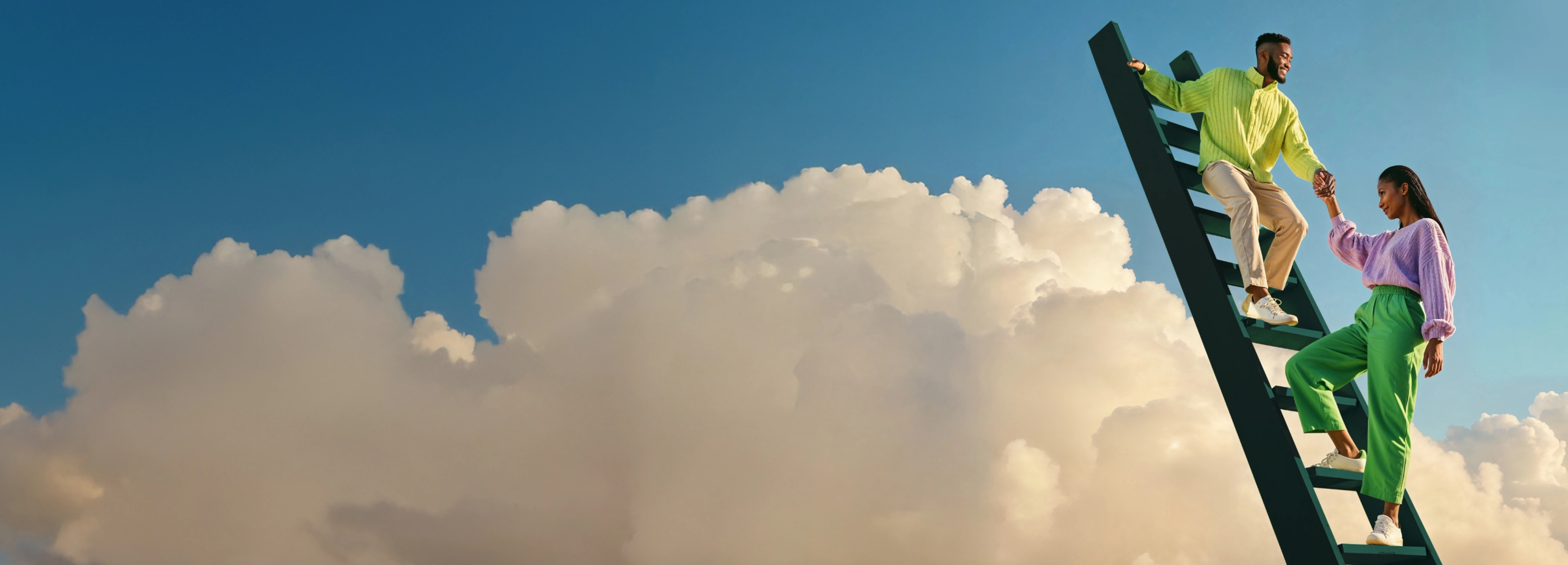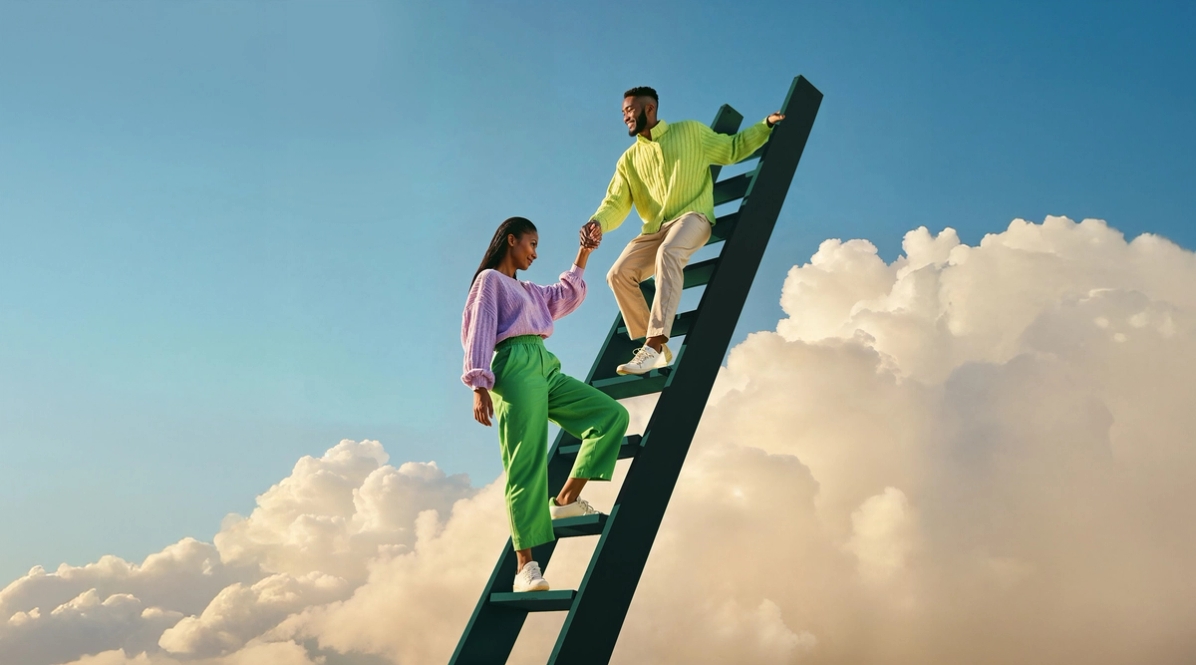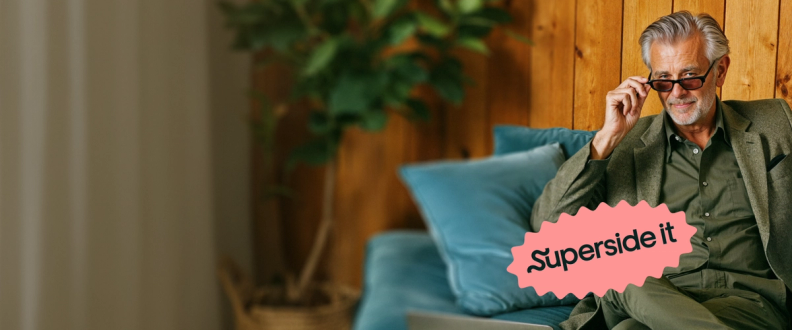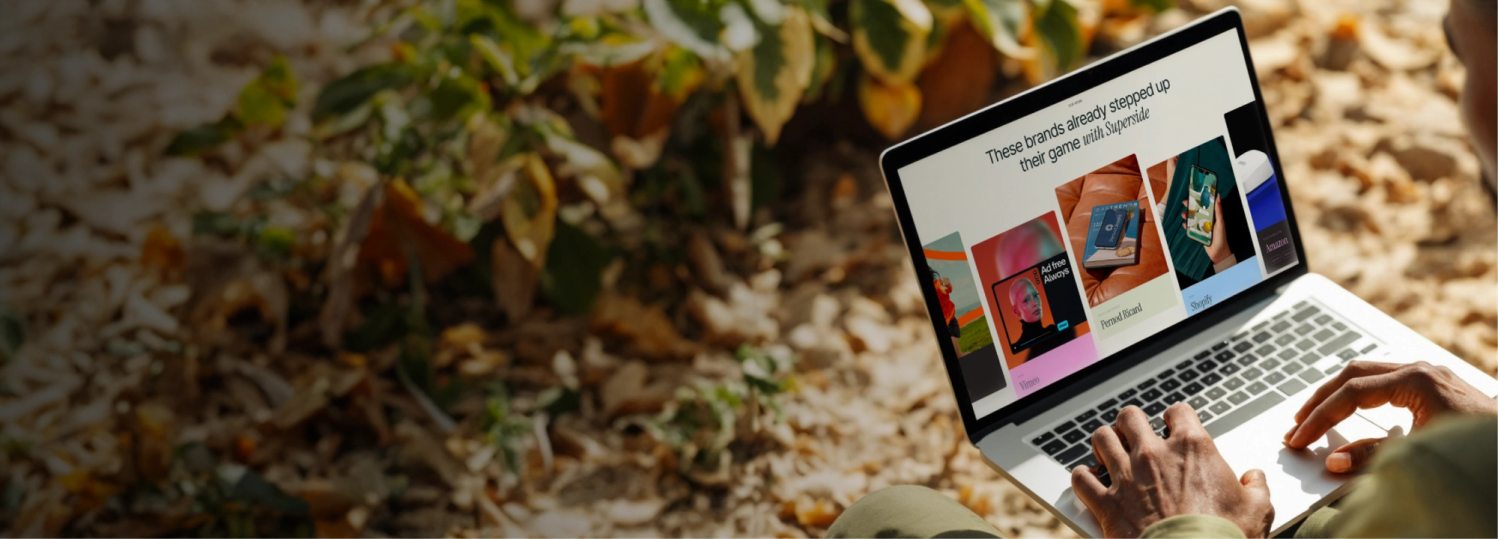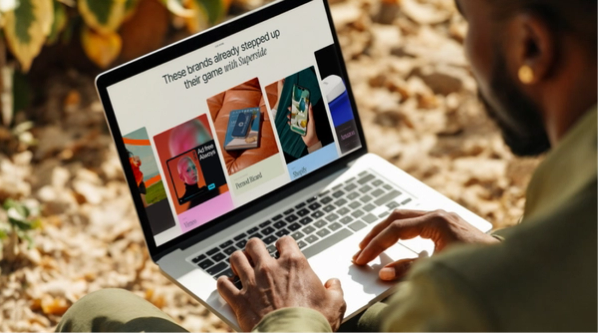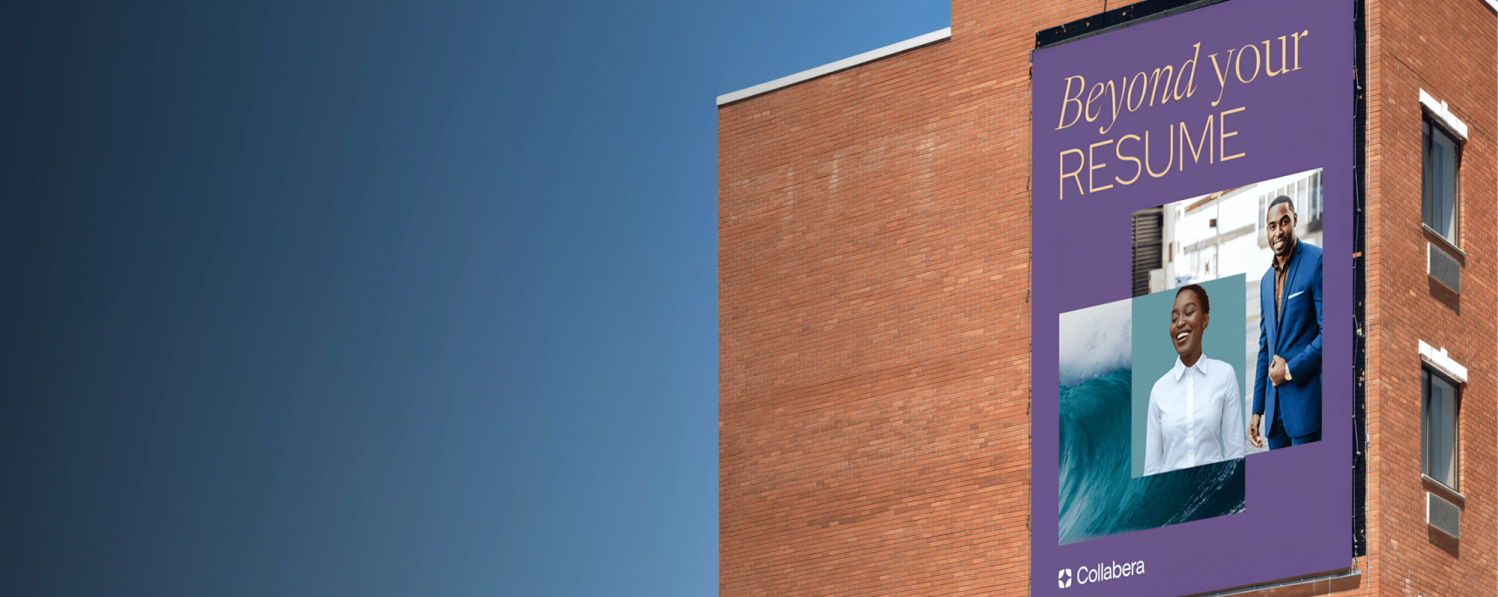How to produce motion design at scale: 6 tips & examples for creatives
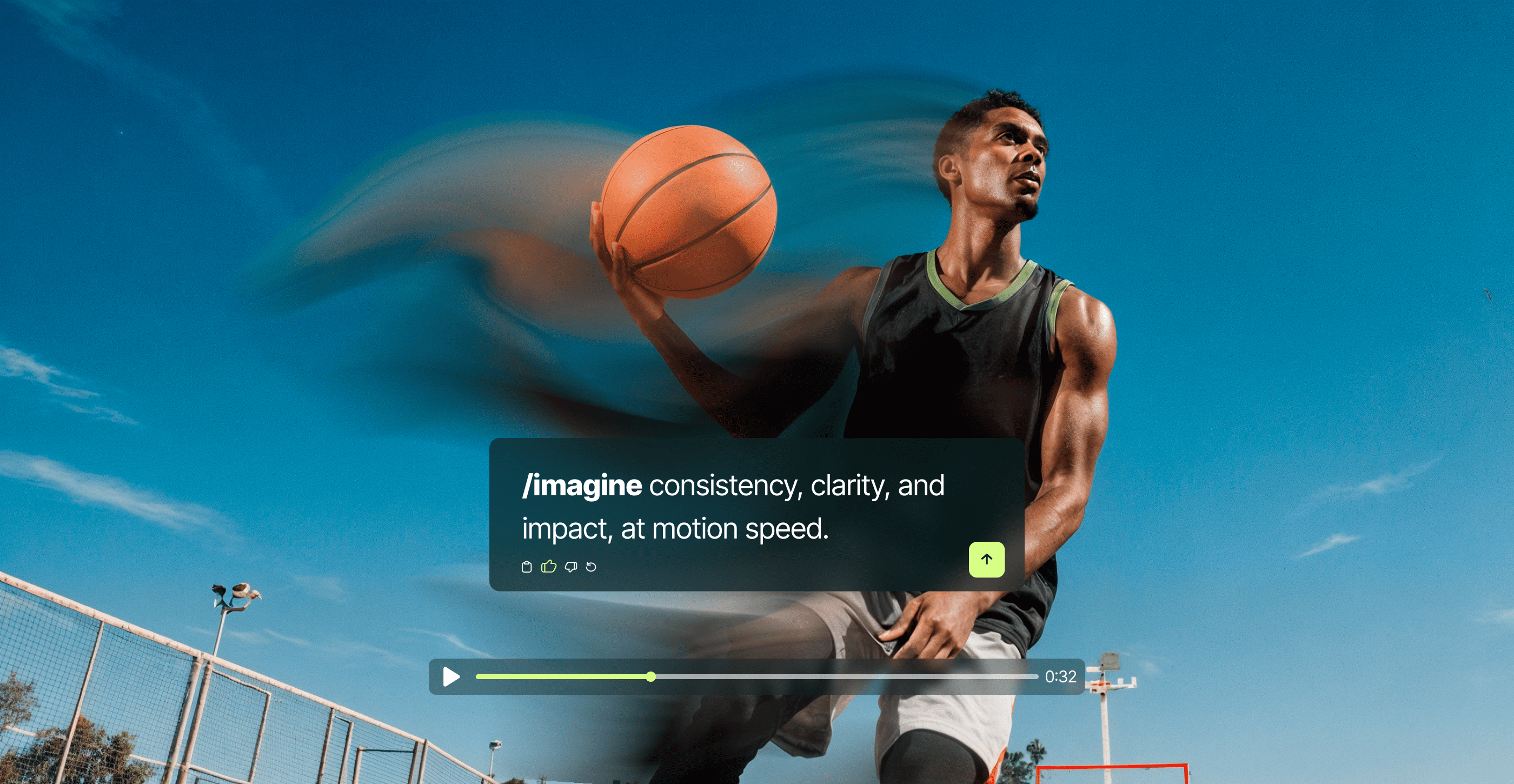
Motion assets aren’t just fun to look at. These designs can simplify complexity, improve customer engagement and make big ideas stick. Armed with insider tips and enterprise-level examples, it becomes easy to maintain sharp, consistent output and produce motion design at scale. Read on to learn how to produce them at scale using AI-powered solutions and top examples from Superside and other top creative companies using motion at scale.
Scroll through a few social media campaign examples and you’ll see motion everywhere. From punchy product ads to educational explainers, there’s a reason to keep using motion: To retain attention, beat the competition and avoid going unnoticed with plain static design.
Studies show that motion ads can drive up to 1.5 times more clicks than static creative, and omnichannel marketing campaigns that use motion graphics can boost revenue by as much as 49%. It’s no wonder that adoption of motion content continues to rise. In fact, it’s grown steadily over the past decade.
Motion graphics also create momentum and provide context at every step of the sales funnel. At the top, it grabs attention and makes complex ideas instantly digestible. In the middle, it builds trust and brand credibility. At the bottom, the design format can boost conversions with persuasive narratives.
But to consistently create engaging motion graphics at enterprise scale? That’s the hard part. This article unpacks how to achieve high-impact motion graphic production at scale and draws on real-world examples from top global brands to inspire you.
What does ‘motion design at scale’ imply?
The term motion graphics at scale refers to companies’ ability to consistently produce high-quality, brand-aligned motion content quickly and efficiently for use across multiple channels and campaigns.
Unfortunately, however, motion graphic work is time-consuming, which means this level of scale can be tough to achieve.
Our Overcommitted report notes that enterprise creative teams now face immense pressure to produce on-brand motion and other types of creative. Audiences expect dynamic video and motion content everywhere they look, and leadership knows that superb animation and motion graphics can differentiate them from competitors.
When designers are asked to produce motion graphics at scale to meet the demand, burnout becomes almost unavoidable. What’s more, outsourcing to traditional agencies and freelancers is no longer a viable option. Traditional agencies are expensive and too slow, while freelancers can’t cope with the volumes required.
The result? Creative bottlenecks that stifle growth and drain team morale.
A good production partner and strong design systems, which include locked-in brand and motion guidelines, reusable motion assets and centralized, AI-powered workflows, are a proven way to scale with success. Tick these boxes and it becomes easy for designers to produce consistent, brand-aligned motion graphics for multiple campaigns, markets and channels.
It’s simple, really. If your enterprise wants to produce a large volume of on-brand motion assets and move at the speed the market now demands, you first need to develop a repeatable system.
The laws of motion graphics for a successful strategy
To beat your competitors in the motion graphics game, it’s essential to apply two key principles or “laws.”
Law #1: Match motion to your sales funnel
In social and other digital ad campaigns, motion is most effective when it’s tailored to each stage of the sales funnel. For example:
- Top-of–the-funnel (TOFU): Motion graphics help you to capture attention in crowded feeds. A good example is the Spotify Wrapped animated previews, which drive instant shares and brand awareness.
- Middle-of-the-funnel (MOFU): Motion graphics can help you simplify complex ideas to educate and engage target audience members who are aware of your product or service. A great example is Dropbox’s animated explainers, which break down abstract cloud concepts into easy-to-understand graphics.
- Bottom-of-the-funnel (BOFU): You can also drive conversions with persuasive, brand-consistent stories told through motion. Take a look at Apple’s polished product demo videos. They highlight features and reinforce trust through film, motion and a spot-on narrative (this Apple Intelligence video is a good example).
Superside’s team of full-stack motion designers helps major global brands to create omnichannel assets tailored to every stage of the sales funnel. We can do the same for you.
Take, for instance, the work we did for Marqeta. When the fintech platform decided to launch a high-visibility, high-impact OOH campaign to build brand awareness, leave a lasting impression and reflect the growth of the company, they decided to Superside It.
As a trailblazer in ad placement, Marqeta was already skilled at communicating tech to its core audience. The challenge was to expand its reach and help the brand earn the recognition Marqeta truly deserved. The knockout motion graphics we helped them to display on Times Square made this possible.
Law #2: Build scalability with robust design systems
The second law is to implement design systems that facilitate the scalable, straightforward reuse of motion graphics.
Pre-designed templates can help internal and external creative teams quickly adapt designs without needing to start from scratch.
Motion libraries can provide ready-to-use assets and AI custom image models can help maintain visual consistency. Combined with guidelines that define brand rules for your motion graphics, these systems ensure consistency, quality and production speed.
Robust design systems also support higher team productivity with zero added stress or time wasted. It’s a win-win for everyone.
6 tips to include motion design at scale in creative production
Scaling your motion graphic output isn’t just about volume and speed; it’s about momentum.
These six tips will help you build a motion strategy that holds up campaign after campaign:
1. Define clear motion principles and scale rules
The first step is to establish a set of principles that defines what movement should look like and feel for your brand. These principles should cover aspects such as timing, how to ease in and ease out of transitions and how to maintain a consistent brand motion style across various formats.
These standards help ensure that every motion asset, whether it’s used in a paid ad campaign or product interface, remains cohesive and recognizable as you scale your output.
We’ve seen firsthand how effective clearly defined motion principles and scale rules can be.
Thanks to Superside’s help, global talent management company Oyster was able to automate its social media campaigns. Our team used the automation platform Storyteq and Oyster’s existing Figma designs to animate and create 20 motion-graphic videos that enhanced its carousel posts. Oyster’s existing motion principles and design systems helped to fuel the brand’s scalability and experimentation efforts.
2. Audit your motion graphic output
Next, take the time to assess the motion assets, animations, frames and even effects currently in use across your organization.
Identify any overlaps, inconsistencies or redundant approaches to help streamline your motion graphic toolkit.
As part of this process, distinguish between functional elements (e.g., scene changes, UI flows) and branded animations (e.g., character animations), so each can be managed consistently.
This kind of audit lays the foundation for a valuable motion library. Once in place, this library will help your creative teams reuse the most effective assets. Be sure to include flexible assets that can be disassembled, combined and used in various ways.
3. Tailor motion to context
Think about how users interact with motion online. Effective motion graphics adapt not only to the channel and audience but also to the scale and importance of the element to which you add motion.
A significant moment, such as the reveal of a new feature in a product video, might call for bold, cinematic animations. Smaller interactions, like button hovers or subtle transitions, work best with restrained, functional motion. In other words, you need to match the animation’s energy, speed and style to the context.
Ensure that you add these rules to your design system.
4. Focus on hierarchy and pacing
It’s essential to use the visual principle of hierarchy to guide the viewer’s eye to the most critical information first. Then, you can use motion to focus the user’s attention and encourage a specific action.
For example, a slightly pulsating “add to cart” button on an eCommerce page will draw the eye and help the user to quickly determine where to click.
Use your design system to ensure that your designers can instantly apply hierarchy and pacing in a brand-appropriate manner.
5. Keep it simple and purposeful
In the scale-up journey, clarity always wins over complexity. Don’t overload your motion graphic library and design systems with unnecessary elements.
Purposeful, minimal motion not only makes each frame more elegant but also keeps your creative workflows lean and repeatable at scale.
6. Embed motion in design systems early
Bake your motion graphic principles into your brand guidelines and design systems from day one. This step helps your creative team to verify whether your motion guidelines and rules align well with your typography, fonts, colors and layout rules. It also offers your designers a chance to create templates they can reuse later.
When motion becomes part of your creative DNA, it helps your creative teams to produce consistent, on-brand assets faster and with less friction. Remember that feedback is critical at this point.
We know this process inside and out: Corporate motion design is a vital part of the design services we offer, and our experienced creative teams have successfully delivered a wide range of motion assets to a long list of customers.
With this expertise, we understand the impact well-designed design systems and libraries can have. Let’s help you bump up your creative efforts to deliver scalable motion graphics that drive attention and results for your brand.
6 examples of scaled motion graphics for enterprises
If you haven’t scaled your motion graphic production efforts yet, it can be hard to visualize what’s possible.
We’ve pulled together six top examples of motion graphics produced at scale to inspire your journey.
1. Forter x Superside
- What we did: Superside developed motion templates, demo animations and an AI-powered video for Forter, an identity intelligence company.
- Format: Motion ads, AI-powered video content.
- Best for: Enterprise companies in need of fast, high-quality motion graphics for use across creative mediums.
Forter’s brand identity revolves around moving particles that form constellation-like patterns. This emphasis on motion plays a key role in the company’s creative production processes. The movement is very effective, but Forter was stuck: The production of the brand’s campaign assets and more required significant time and effort.
When Forter asked Superside to help streamline and support its motion graphic needs, we were eager to jump in.
Our video teams provided creative direction and developed reusable motion templates for quick-turn social content, and produced complex demo animations that enabled Forter to deliver top-quality motion graphic videos on tight timelines.
We also helped Forter experiment with AI-powered creativity. For an internal “All Systems Go” sales kickoff, Superside delivered a sci-fi-themed experience with AI-assisted animations. The result was an immersive, planetarium-like universe produced within tight budgets and time constraints.
Thanks to Superside’s creative support, Forter can now handle more in-house creative work. And whenever there’s a complex project, Forter Superside it.
2. Strava x Superside
- What we did: Superside created energetic animated graphics to promote Strava’s products and features.
- Format: Motion-based creative for the brand’s social media ad campaigns.
- Best for: Enterprise companies in need of fast, high-quality motion graphics for use across creative mediums.
In another example of the scaled motion design work we do, Superside partnered with fitness app Strava. The goal was to help them develop campaign assets that would inspire greater engagement within their community of athletes and fitness enthusiasts.
Strava is known for its data-driven insights, so we translated their data into bold, kinetic visuals that reflected the movement, pace and energy of sport. With a dedicated global team and agile AI-powered creative workflows, we created a large volume of motion-centric ads that aligned perfectly with the brand’s personality and overall narrative.
Scalable motion templates and frames, along with clear animation rules, made it easy for Strava to keep its branding consistent as it ramped up to use motion across different campaigns and channels.
3. Reddit x Superside
- What we did: Superside created unique motion designs based on Reddit Recap insights from the previous year.
- Format: Motion assets for Reddit’s on- and off-platform marketing efforts.
- Best for: Enterprise companies in need of fast, high-quality motion graphics for use across creative mediums.
When social media platform Reddit wanted to scale its “Recap” campaign after another successful year, the brand turned to Superside for creative support.
Along with its OrangeRed brand team, we produced 87 unique animated assets for multiple formats, with many delivered in just 36 hours. The campaign came to life through playful animations. Think bananas, tiles and magnifying glasses.
Superside combined speed with a systematized approach, which helped Reddit to launch its campaign within a tight timeline. The campaign, a resounding success, resonated with users and reinforced the platform’s identity as the heart of the internet.
For more examples of motion graphics that make customers sit up and take notice, check out these additional examples of our designers’ motion graphic work.
4. Headspace
- Format: App, web and social media motion design.
- Best for: Brands that want their motion graphics to closely reflect their ethos and goals.
Headspace, a popular app for meditation and sleep, uses motion graphics to promote mindfulness and encourage users to slow down.
The brand relies on simple animations, gentle shifts, soft visual elements and spacious layouts to convey its personality and messaging. The motion graphics’ rhythm and movement are measured and consistent, which reflects the meditative state the brand aims to portray.
Subtle animation sequences, such as shapes that expand and contract, mirror the pace of guided meditations for app users. Even the smallest interactions, such as when a user taps a button or switches sessions, maintain the same calm brand identity.
Headspace successfully designed a seamless experience that aligns every touchpoint with its promise of mental clarity and focus.
5. Apple Weather
- Format: App motion graphics.
- Best for: Experiential motion design, built on a realistic, immersive environment.
Apple’s Weather app masterfully turns real weather conditions into an interactive experience. Rain appears in layered depths, sunlight changes with the hour and there’s movement in the clouds as the user scrolls. The motion feels intuitive and seamless.
The app also transforms live data into truly useful information. Each movement reflects the weather at a particular point in time, which makes it easy for the user to grasp the visual information and quickly sense what to expect.
Ultimately, the motion graphics in the app help to create an immersive experience that’s much more entertaining than simply checking a static weather forecast.
6. Airbnb
- Format: 3D animated scenes (stop-motion style).
- Best for: Brands that want to convey warmth and authenticity through detailed, immersive animations.
Airbnb presents its various products through detailed 3D scenes that mimic a fun stop-motion style. Each scene is thoughtfully crafted with soft light and textured details that add warmth and personality. With this approach, Airbnb doesn’t just try to sell products; they tell beautiful stories across the user journey.
The designers used uneven textures, softened edges and natural light to evoke authenticity. They also successfully avoided the sleek, hyper-polished look of competitors’ products to align this project with Airbnb’s broader mission to make travel feel personal.
Each product category helps to create a narrative experience that invites users to explore Airbnb’s various products.
Superside: Your motion graphics partner for scale
If you’re ready to scale your brand’s motion projects and outputs, you need a creative partner that understands what it takes. The secret to success is an experienced team, with fast feedback loops that give you access to the capabilities you need, whenever you need them.
As the world’s top AI-powered creative service, we help in-house teams at brands like Amazon, Intuit, Reddit and Salesloft scale their motion graphic output fast and cost-effectively.
Superside also offers much more than scalable motion services. We tap into a highly curated network of specialists across design, branding and other creative disciplines to help you meet almost any creative challenge head-on.
Time to up your motion game? A trusted partner that delivers scalable production anytime, equipped with the latest design expertise and tools, is essential. That partner is Superside.
FAQs
Emanuel is a Content Specialist at Superside. With the knowledge that three languages (and counting) and digital marketing can serve a creator, he has helped B2Bs from multiple industries to write, optimize and scale their content game with compelling pieces that answers questions and solve problems. On Superside, Emanuel streamlines content ideas into powerful articles that guides you on how to use Superside multi-powered services to scale your business to the max.
You may also like these
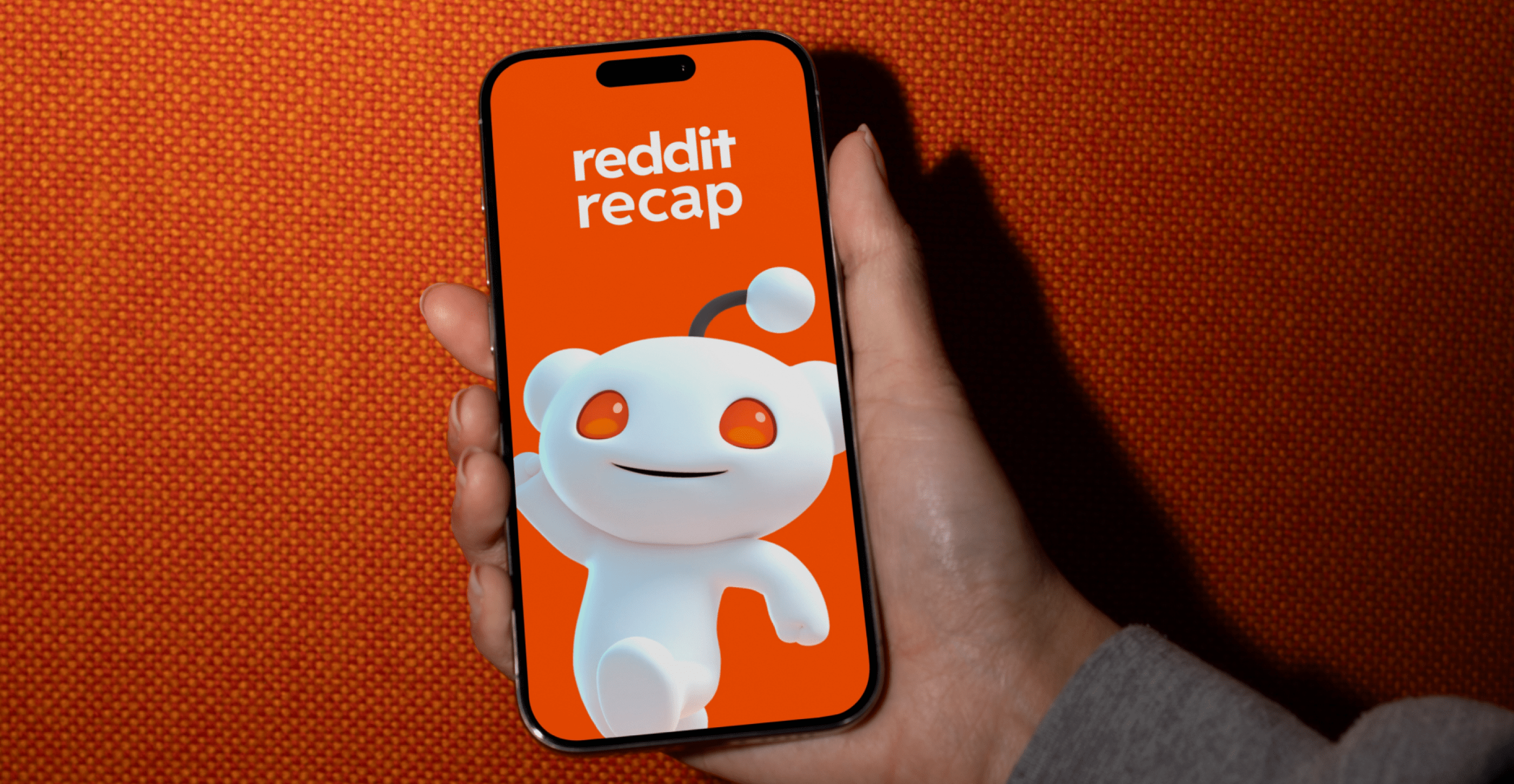
12 motion graphics examples for brands to inspire your creative strategy
Whether you use motion graphics to showcase your latest products, educate internal stakeholders or create scroll-stopping social content, animated visual content can quickly grab attention and drive action.When executed well, motion graphics bring brand stories, products and ideas to life, making them more memorable and engaging for audiences across every touchpoint.In fact, creative that incorporate motion graphics consistently outperform static imagery, generating 1,200% more shares and increasing conversion rates by up to 80%.If you’re keen to create more motion graphics in 2025 and beyond, keep reading. We share 12 knockout motion video examples to inspire your brand’s creative strategy.But first, a quick recap: What are motion graphics videos?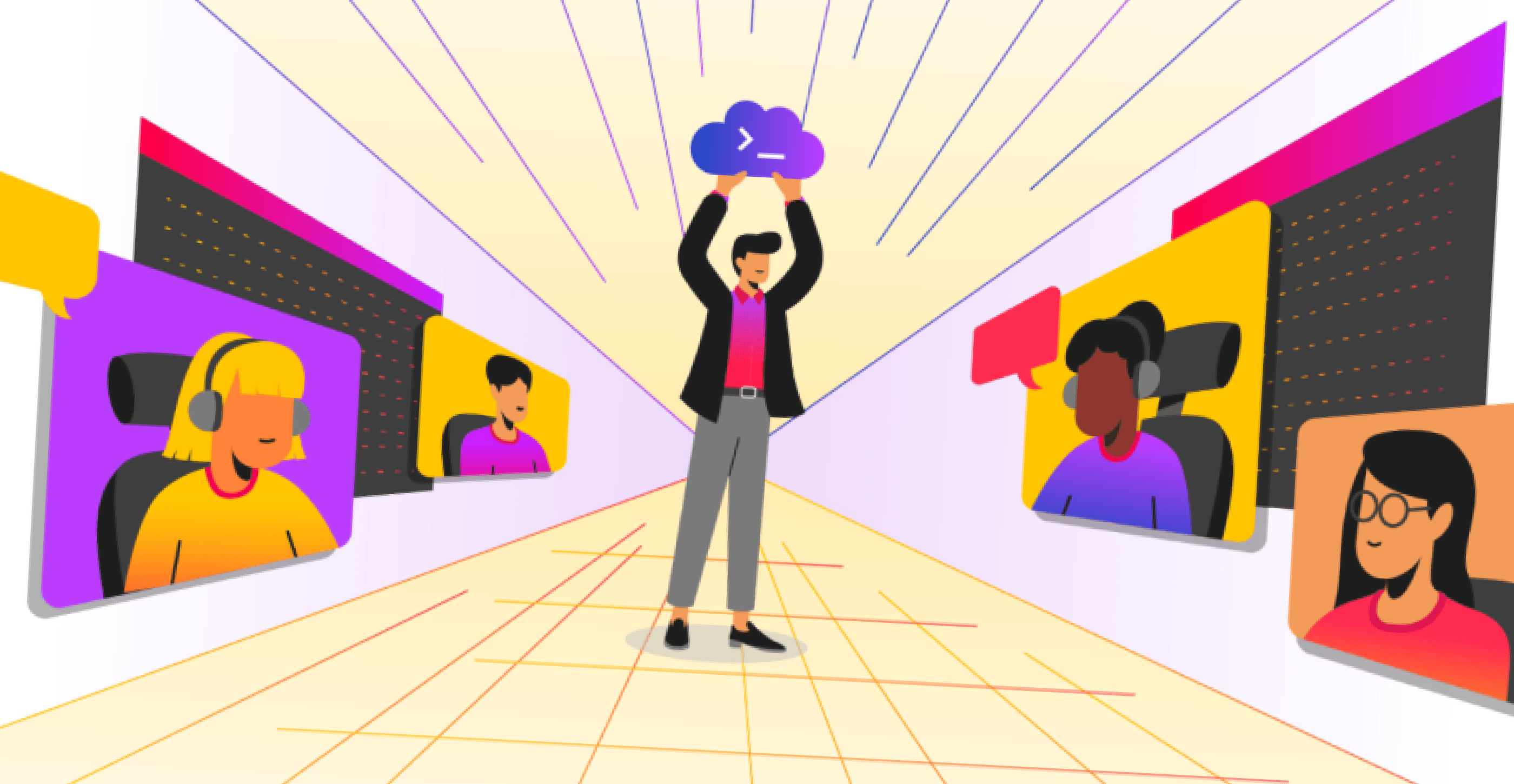
15 best corporate animation examples from top brands in 2025
Worldwide, video marketing and communications are gaining momentum, with businesses increasingly relying on animation to convey their messages. Currently, 60.8% of marketers use animation in their social media campaigns, and 37% employ animated explainer videos to simplify complex ideas into visual stories.The channel is popular for a reason: Videos engage and educate audiences more effectively than text and static images. Viewers retain 95% of a message when they watch it in a video, compared to just 10% when reading text. Animated videos, in particular, leverage this advantage by combining movement, color and narrative to make information memorable and engaging.We know creating compelling animated corporate videos can be hard work, which is why we’ve compiled this guide featuring 15 of the best business animation examples from real-world brands. We cover what makes each example successful and how you can apply these lessons to your corporate animation videos—hopefully saving you time.Ready to zoom in? Let’s go.What counts as ‘corporate animation’ today?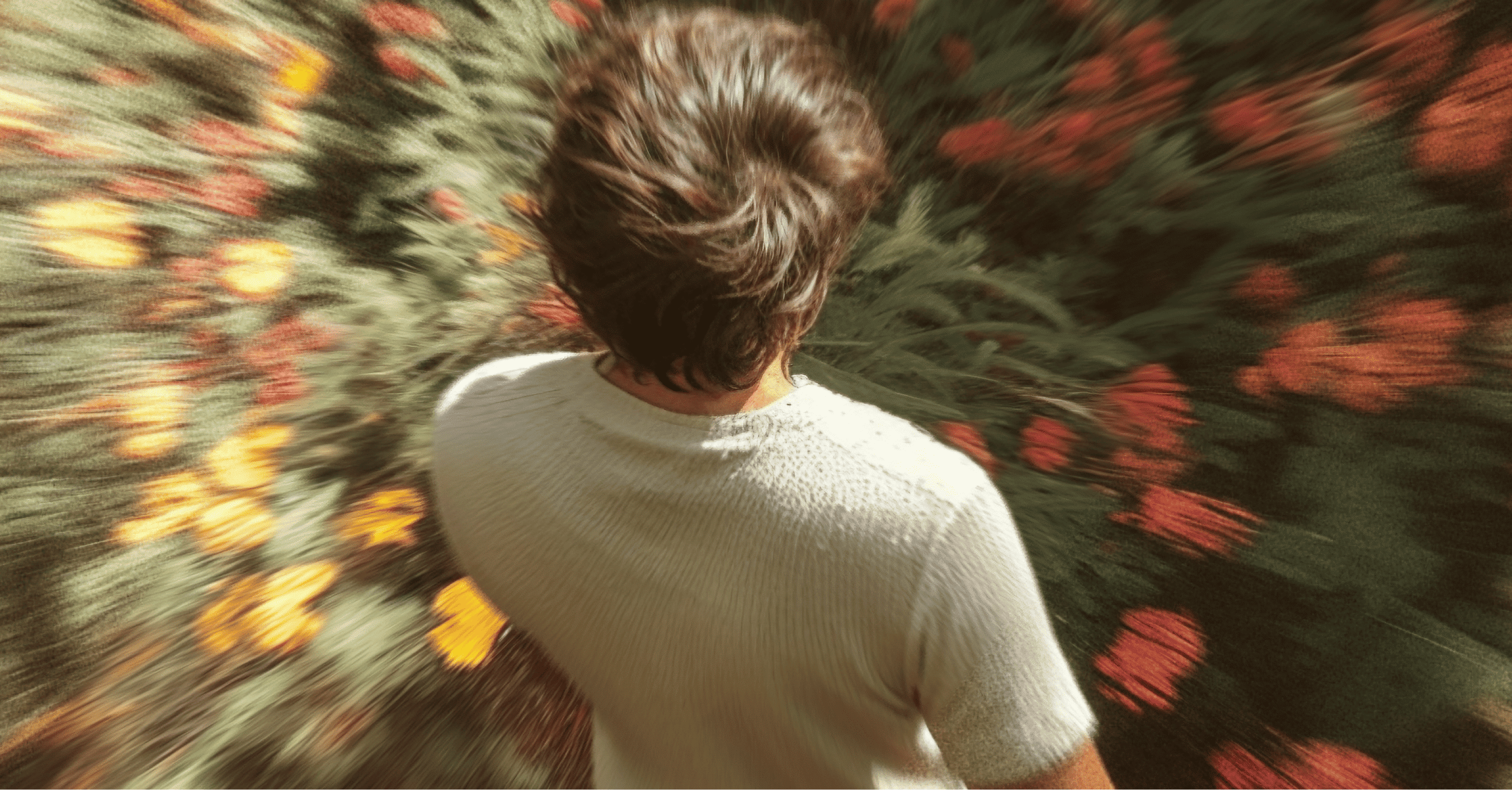
13 best motion graphics companies & services in 2025
We live in a world of short attention spans and loads of distractions online. However, if you use motion graphics effectively, they’re one of the most powerful tools to capture your target customers’ attention on social media and other platforms. But without the right experts by your side, even the most carefully crafted motion graphics strategy can get lost in the online noise. Motion graphics skills are specialized, and chances are your in-house team doesn’t have all the skills needed to deliver high-quality graphics at scale. Luckily, there are many experienced motion graphics agencies you could approach. But outsourcing isn’t always straightforward: Many creative design agencies don’t give you the flexibility to work through multiple project iterations. They might also be unfamiliar with what’s likely to generate views in your industry.What should your next move be? Start by discovering how to choose the best possible motion graphics company. Then, flip through our list of the top motion graphics studios to find the perfect creative partner.